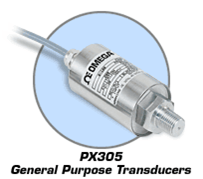Problem 1: A calibration curve allows you to relate a certain measured signal to a process variable of interest (say...like the position of a float in a rotameter to flow rate). In this problem, you are interested in creating a calibration curve that relates a voltage reading to a pressure (this is accomplished using a transducer). Your measurements are as follows:
|
Pressure (psig)
|
Voltage (mV)
|
|
0.81
|
-0.0083
|
|
2.35
|
0.0019
|
|
4.61
|
0.0159
|
|
7.35
|
0.0317
|
|
9.80
|
0.0443
|
Plot this data on a graph and create a "best fit" using the trendline function. Put the expression for the trendline (using reasonable variable names) on the graph.
From your model, estimate what the voltage reading will be when the pressure is equal to 0 psig?
Please hand in a printout of the graph you have created (and the trendline)

Problem 2: In Problem No. 1 we used Excel's built in "Trend line" functionality to fit our data. When we do this, we treat the process of fitting the data to a straight line as a "black box." When we use the term "black box" we imply that we do not understand and possibly do not care what is happening inside. It is dangerous, however, as an engineer, to treat almost anything as a "black box" and you are cautioned not to. It is always better to understand what something is doing than to not understand and to apply things "blindly."
The process of filling a straight line to a set of data is actually applying the principles of calculus to find the slope (m) and intercept (b) of a line, y=mx+b, that cause the line that has the least sum of the squared error when compared to the actual data. While some of you likely do not have the calculus background necessary to derive the equations used, they are simple:
m = ΣxΣy –Nσxy/(Σx)2 – NΣx2
b = Σy – mΣx/N
Use these equations to determine the slope and intercept for the least squares best line to the data in Problem No. 1 and compare your results to those generated by Excel's built in Trend Line function.